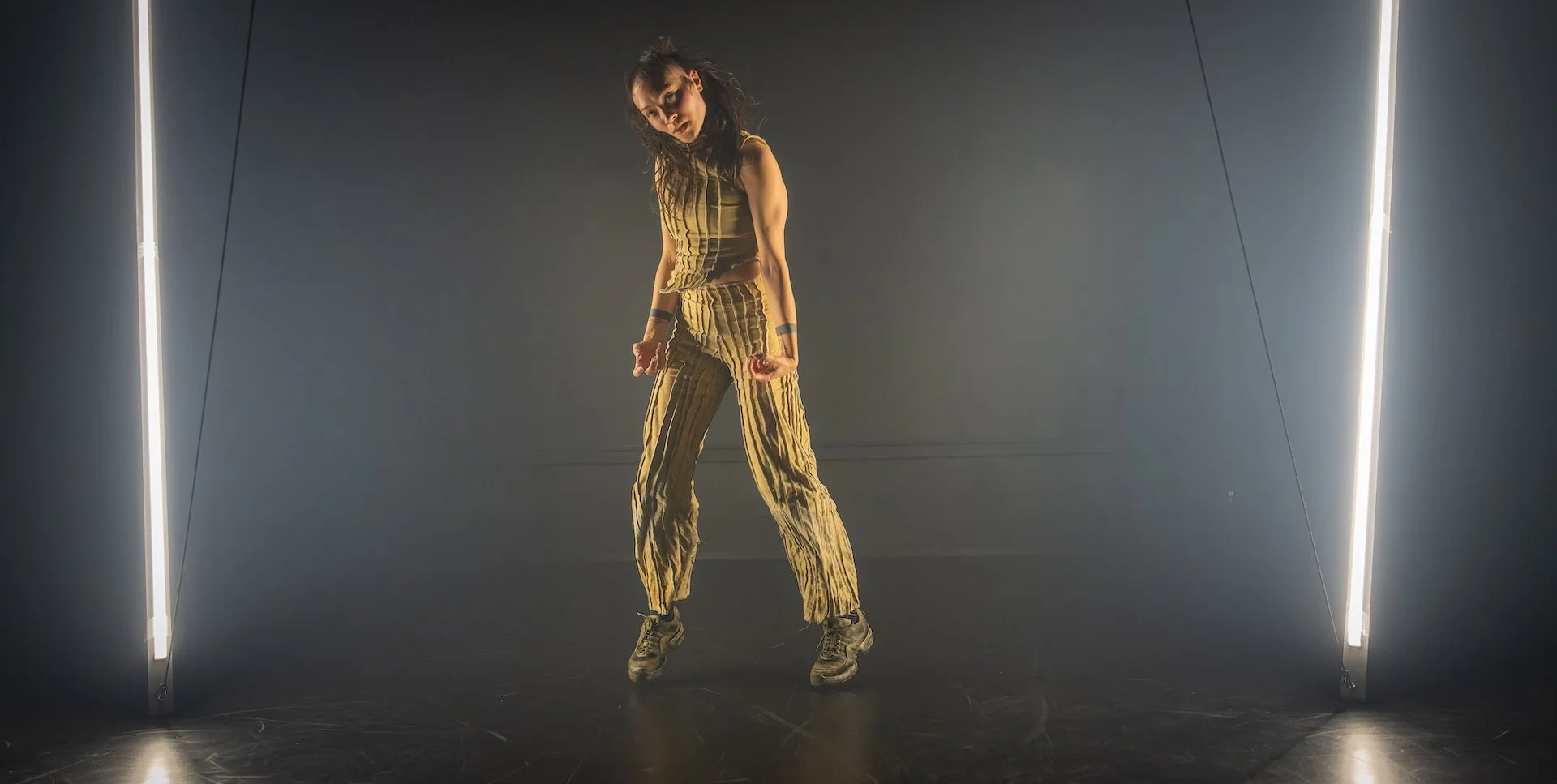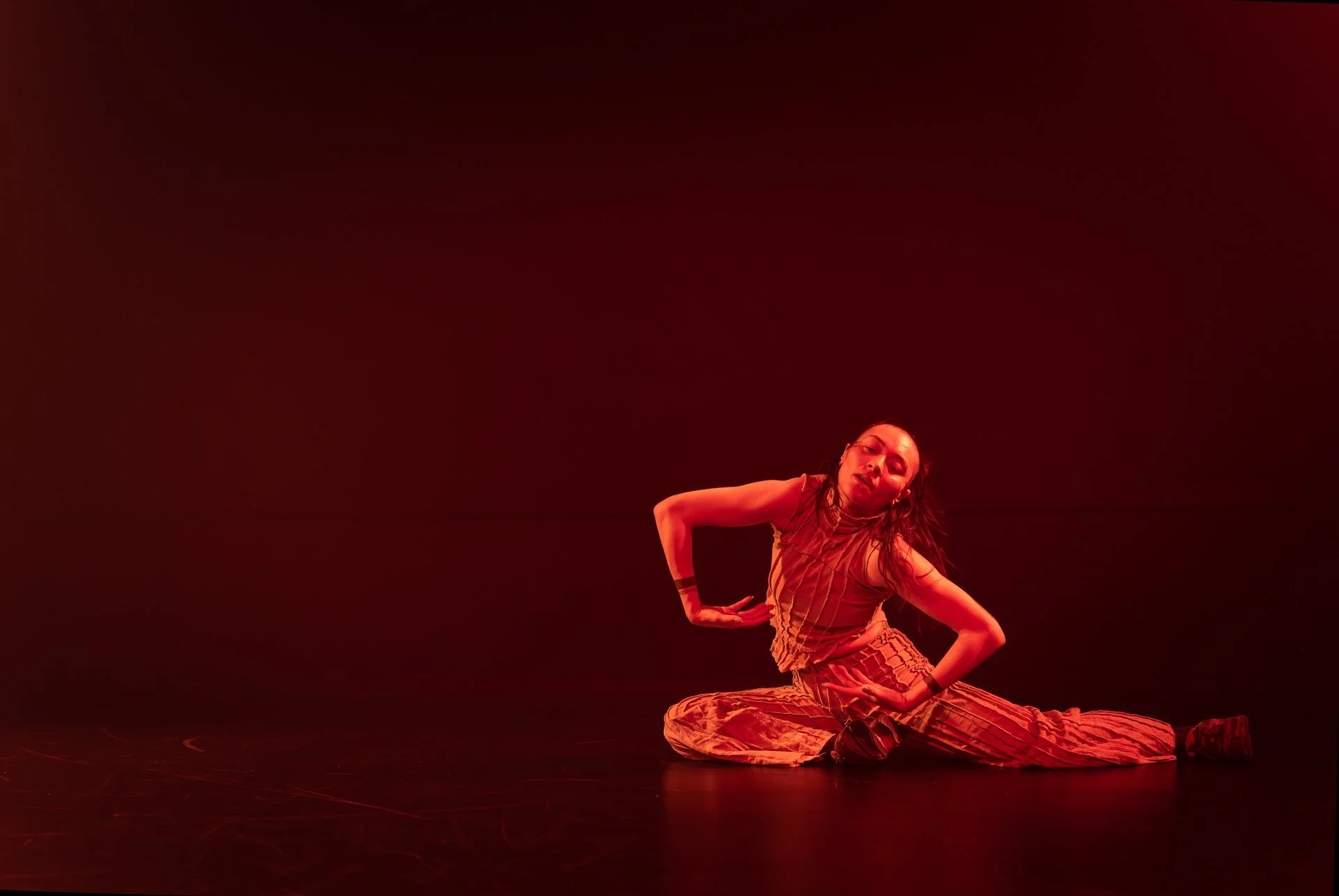Be Heintzman Hope - An Experience
Photo by David Wong
A list of poetic actions:
Double knotting your shoes, joining the fellowship of people who double knot their shoes like you do, and for a moment becoming one in the doing.
Walking in the rain, in a jacket which isn’t waterproof, arriving soaked and cold.
Walking a downtown alleyway, and there, a chance encounter with a good friend who has already started drinking. I’m good at finding friends in unexpected places (kind of like how I’m good at winning coin tosses).
Watching a stranger eat for an hour and a half; bánh cuốn and a chicken bowl, in a quiet restaurant off St. Laurent.
Between bites, Be Heintzman Hope tells me how their parents met at Green Peace in the 80s.
“My mom really nurtured me and my brother's creativity. She’s a pianist…I think that she was super hard working. That’s another thing: with my grandfather [the first Chinese Canadian in electoral politics] and the kind of discipline my mom had as a child, she knew how to work hard. And I think that the thing that maybe felt harder for her to access was being wild and free. I think that was something that she was scared of in me, but also also really wanted. She introduced me and my brother to all kinds of things.” Creating across mediums ranging from music to dance, poetry, video, and Taoist martial arts, Be is something of an artistic polymath. “My mom also got sick with cancer when I was 14. So my whole world really shifted.”
The audience gathering at the MAI (Montreal, arts interculturel) is seemingly free of concern, chatting boisterously in the cafe lounge. An urge to scream creeps up my throat but doesn’t escape my lips. Aren’t you terrified about what might happen, only moments from now, in the darkness of that theatre, as a body exposes itself, is undone through movement, leaving only the bare soul, breathing, panting, free? Is anyone ever truly ready for the ego death which occurs in performance, imparted onto the viewer? Yet this is why we’re here, isn’t it? I marvel at the bravery of these strangers. Seated in the dark I’m hit by a wafting smell of cigarette smoke. Many of us are masked, myself included. Somehow this medical apparatus adds to the sense of ritual. I blend in, anonymous, unaccompanied but not alone, inches from adjacent covered faces. Who is an artist? The one who can breathe for us when we cannot breathe. Amazingly, the label of artist isn’t one which Be takes on for themself.
“I’m honestly really hesitant to use the word ‘Artist’... [I]n different parts of the world they would never use the word artist. Like people are singing in the field and it’s beautiful but no one is really claiming that title. So yeah, that resonates with me, because of this idea of daily living. Am I experiencing my life? What am I bringing to it? What am I receiving? I guess I don’t identify as an artist. I identify as a facilitator… I started giving workshops in my living room, as a kind of pay-what-you-can class, that kinda really turned into something. I had mentorship with different people, and brought in breath and voice into it, and it’s something I’ve been doing for 9 years now. Yeah, all the queers and weirds kinda came to me. As I got older, the people coming to my workshops got older, and with that ageing process also came a refinement in what people were getting into... It’s a lot of breathing. Different ways of breathing. Holding the breath, stretching the breath, adding voice. Misting, misting the voice. Body scans, also with the voice. I guide the workshops with pleasure. Of course there are places that feel not so good, so take note of that, but we’re gonna go to the gushy places, where it feels good to spend time with the voice in there. I put people in pairs and do breath, voice and movement duets. One person is the voice, the other person is the body, and you can react to the sounds you’re receiving, you can embody, you can resist. I also like to say to people, ‘Think of your voice like ink, like water. Watch how it moves through this person’s body, before you add more’.”
Speaking shittily in a foreign language, returning to the state of children who lack not complexity of thought but mode of articulation.
Wandering slightly buzzed to the sculpture park below Rene Levesque, and watching the silhouettes of people in the apartments that loom over it. Wondering romantically about the lives of others.
Eye contact that lasts more than 10 seconds. Feeling seen.
On an empty stage, between pools of light, their body appears. Sounds which shift between the digital, vocal, and the organic. Repetitions of movements, switching from intense sensuality to grotesqueness, almost alien. Everything is spare, essential, like the ribbed garments they are wearing, in which they pass for a warrior, or a shaman.
Photo by David Wong
“Dance was the only place where I felt like I had access to grief. Even though we were such an open household, me and my brother, because things were in such a state of crisis surrounding my mother and her wellbeing, there wasn’t enough bandwidth to cover us. So dance became a place where I could do that. And dance is also a way that I have celebrated in the past, like, the primordial way of just connecting… So I wanted to create a dance piece that captured that grief. Drama, also. Like it is quite funny. Sometimes my partner or a friend will be watching and start laughing. So we’ll see.”
Although there is indeed humour in the performance, the audience is too enraptured to laugh, afraid to shatter the sacred moment.
“I think I’m always craving more ritual, and I’m seeking out techniques that bring more of that. I would say that the rituals that I have in place for myself can be like walking. Walking to the studio, the simplicity of that. I have my rolodex of physio exercises to take care of my body and music that I like to listen to. But I feel like it could always be more. It’s felt really rushed the past few weeks.”
The lead up to an opening night is full of detractors from the spiritual, connectedness, and what is actually important about creation. Be’s process is embedded in the mundane rituals of daily life. A characteristic of the artist-practitioner is that their practice often dictates their lifestyle. In this way their art is holistic.
“I make my coffee in the morning, then I’ll get on the computer and move things around, explore sounds. Yeah… That’s so much of what we’re working on in the video [installation]. Because that is precious, that is gratitude, and to bring preciousness to the mundane is living. Living more lively. There's a presence in that. That’s mindfulness.”
Picking blueberries, or any other fruit that might stain your fingers with its blood.
Be exits the stage and the crowd follows them. Among a room of video installations, body care workers treat three people, all of whom are otherwise involved in the show. One performs acupuncture, another a massage. Be lies face down as the care worker places one hand on the back of their head, the other between their shoulder blades. Be’s breathing shifts, ever deeper.
“It’s always so striking how people open up when they’re in connection. The work after that is how do you bring that connection on your own, and use that to create aliveness.”
Photo by David Wong
A glass shatters and the restaurant goes silent. I tell Be that’s the second time I’ve watched that happen today. They ask me what it means and I make something up. What is an artist? Seeing the world, tearing through it, reaching into the realm beyond, and exposing the underlying truth.
“The wound is where the light enters.” Be tells me, quoting Rumi, a Sufi poet. The vibe at the MAI is post new-age. An astrologer consulted on the project, and Be explained to me the connection.
“When making this project I just thought it would be nice to have someone on the outside, who wasn’t doing dramaturgy, you know? I feel like that aspect is really important to me: to have support. Spiritual support as well, because in having a big creation like this, there are a lot of things pulling away from that, the spiritual aspect.”
Their art is clearly a spiritual practice in and of itself, even if such a practice must concede to participation in capitalism. To live life as a creator, the creations must be commodified.
Planning your dream vacation. Envisioning your past lives.
“Most people don’t live off of expressing themselves. I think that’s an important thing to remember, and part of the spiritual practice as well. When you’re confronting that hunger, that ego for success, just like, the patience, you know?”
Opening a fortune cookie. Others see you as a wise person, it reads.
I smirk at Be. “That’s not a fortune, that’s just a compliment.” they tell me. I can’t argue with that. Theirs says Your nature is both dramatic and romantic. I think the performance proves it.
Photo by David Wong
More Information on Switch (meditations on crying) + Poetics to Activate the Technology of the Body + Nurse Tree can be found HERE.




